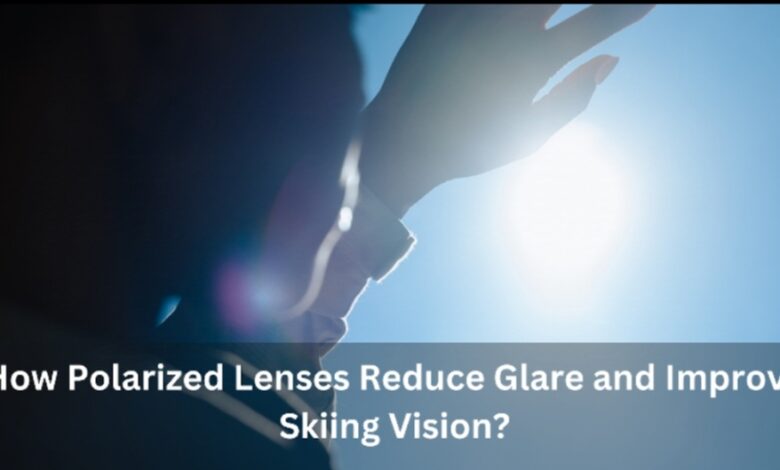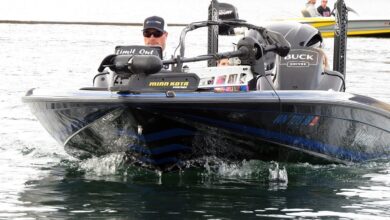How Polarized Lenses Reduce Glare and Improve Skiing Vision?

Have you ever wondered how skiers maintain clear vision in bright, snowy conditions? The answer lies in polarized lenses. These lenses reduce glare from snow and ice, enhancing visibility for better safety and performance.
In this blog, we’ll explore how polarized lenses improve skiing vision by reducing glare, increasing contrast, and offering long-term eye protection. Whether you’re skiing on a sunny day or navigating tricky terrain, the right eyewear is key to enhancing your experience.
The Importance of Clear Vision for Skiing
Clear vision is one of the most critical factors for skiers, affecting everything from safety to performance. The snow can reflect sunlight intensely, causing a blinding glare that can obscure vision and make it difficult to spot hazards or judge terrain. This is particularly dangerous for skiers who must react quickly to sudden changes in the slope.
Polarized lenses combat this problem by blocking the intense glare from reflective surfaces like snow and ice. By enhancing contrast and improving depth perception, these lenses allow skiers to see more clearly, making the slopes safer and more enjoyable.
Polarized Lenses for Skiing and Enhancing Visual Clarity
Polarized lenses work by filtering out horizontal light waves—the primary cause of glare. When skiing, the sunlight reflects off the snow and ice, causing an intense glare that can momentarily blind skiers. With the right eyewear, including rx ski goggles, skiers can achieve clearer vision and better adaptability to challenging slope conditions. These lenses allow only vertical light to pass through, greatly reducing glare and providing a sharper view.
The Science Behind Polarized Lenses
The core technology behind polarized lenses is a special filter that blocks light waves reflecting off flat surfaces, such as snow. This filter improves contrast, making the skier’s surroundings sharper and more defined.
Skiers benefit from clearer vision even in bright, snowy conditions. For example, polarized lenses can help spot ice patches, moguls, or other terrain variations that could otherwise go unnoticed.
Choosing the Right Lenses
Choosing the right eyewear is essential to maximize the benefits of polarized lenses. Ski goggles, specifically designed for the slopes, provide the best protection against glare and UV rays. They offer a secure fit, are more durable than regular sunglasses, and often feature anti-fog coatings to improve visibility in varying weather conditions.
Ski goggles are also designed to stay in place during movement, offering stability during fast descents. Many models also offer interchangeable lenses, allowing you to adapt to different light conditions for optimal vision.
Features of the Best Lenses for Skiing
When selecting skiing eyewear, it’s important to consider key features that enhance performance. Polarized ski goggles with UV protection shield your eyes from harmful sun rays at high altitudes. Anti-fog coatings prevent fogging caused by cold temperatures or sweat, ensuring clear vision throughout your session.
Durability is also crucial, as ski goggles must withstand harsh weather conditions and rough handling. Look for lenses with scratch-resistant coatings to extend their lifespan and consider goggle designs that offer wide peripheral vision for better awareness of your surroundings on the slopes.
Ski Goggles for Reducing Glare While Skiing
Polarized ski goggles are designed with the intent to minimize glare, which is usually one of the major hindrances for skiers. Sunlight reflecting from the ground onto the snow can make vision hazy so that skiing becomes uncomfortable and somewhat dangerous. Polarized lenses remove the glare ensuring clearer vision and a more enjoyable experience on the slopes.
Additionally, polarized lenses protect the eyes from unnecessary light, which might otherwise cause long-term damage. They also assist in reducing eye fatigue, thus enabling longer periods spent by skiers without them having to strain or refocus too often.
They offer great versatility by enhancing visibility, even in poor or changing light conditions like cloudy or overcast days—perfect for any ski adventure.
How Polarized Lenses Reduce Glare on the Slopes
The sunshine bouncing onto the snow from a bright sky (or below trees and overhanging mountain ridges) can be truly intense on some days and at higher altitudes. On very bright day, skiing becomes dangerous because snow glare makes it hard to see down the slope.
The snow and sunshine reflect what seems like almost all horizontal light waves-the cause of this glare-and if most light waves reaching the lens are blocked, skiers get an easy time during their skiing. Improved visibility allows skiers to pick out details on the ground (ice patches, bumps, jumps) while skiing.
Combined with the contrast, the skier can also detect subtle changes between the snowy terrains using this pair of goggles. So snow is not just invisible, but parts of it become undistinguishable from others.
Polarized lenses make vision clear at times of sudden changes in weather from shade to bright moments. They also cut reflections from ice crystals, thus enhancing depth perception and giving sharper focus.
Essential Protection for Every Skier
Glare protection is important for skiers of all levels, increasing their performance on the slope as well as keeping them away from accidents. With polarized lenses, a skier can have reduced eye fatigue and so focus better and react without delay to sudden objects.
It also prevents temporary snow blindness and protects against UV rays to make skiing safe and enjoyable for beginners as well as professionals. It also protects your health for long-term use by stopping harmful rays from producing cataracts or other issues. For anyone heading to a snowy slope, these features make polarized lenses an essential choice.
Polarized Lenses Benefits Beyond Glare
- Enhanced Contrast for Better Terrain Visibility: Polarized lenses improve contrast, helping skiers detect subtle terrain variations such as ice patches or hidden bumps.
- Reduced Eye Strain: Skiers experience less eye strain and fatigue as polarized lenses eliminate the need to squint in harsh light conditions.
- Protection from Glare and UV Rays: Polarized lenses shield the eyes from harmful glare and UV rays, reducing the risk of long-term eye damage.
- Prevention of Vision Problems: Consistent use of polarized eyewear reduces the risk of conditions like cataracts and snow blindness from prolonged exposure to glare and sunlight.
- Long-Term Eye Health Support: Wearing polarized lenses ensures better vision protection, promoting healthier eyes over time.
Comparison Table: Polarized Lenses vs. Non-Polarized Lenses
| Feature | Polarized Lenses | Non-Polarized Lenses |
| Glare Reduction | Glare reduction from snow and ice | Minimal glare reduction |
| Visual Clarity | Enhanced contrast and sharpness | Reduced contrast and glare can obscure vision |
| UV Protection | Offers full UV protection | Often lacks full UV protection |
| Eye Fatigue | Less eye strain | Higher likelihood of eye fatigue due to glare |
| Terrain Detection | Improves ability to detect ice, bumps, and moguls | Reduced ability to detect terrain variations |
Conclusion
Polarized lenses add new dimensions for skiers, offering benefits for glare reduction, contrast enhancement, and long-term vision protection. No need to tell about the right accessory one should wear when skiing, whether it be sunny or bright and sunny trails.
Clearly, sharper vision makes these ski goggles worth every penny, as they ensure better safety and a more enjoyable experience. Eye care will always come first, so take the best lens for your eye as it will make slope session safer and much more comfortable.
FAQs
Are polarized lenses better for skiing?
Yes, polarized lenses are ideal for skiing as they reduce glare from snow, improve contrast, and enhance vision clarity, providing a safer and more enjoyable experience on the slopes.
How do polarized lenses reduce glare?
Polarized lenses ultimately block out any horizontal light waves that may cause the glare effect and permit vertical light passage only. Instead, it minimizes the reflections from snow and ice and thereby enhances visibility without strain on the eyes.
Do polarized lenses help in snow?
Yes, polarized lenses would also be relatively effective while skiing when it comes to lowered glare from an ice or snow surface, contrast enhancement, and spotting any potential obstacles while grooming through various amounts of terrain.




